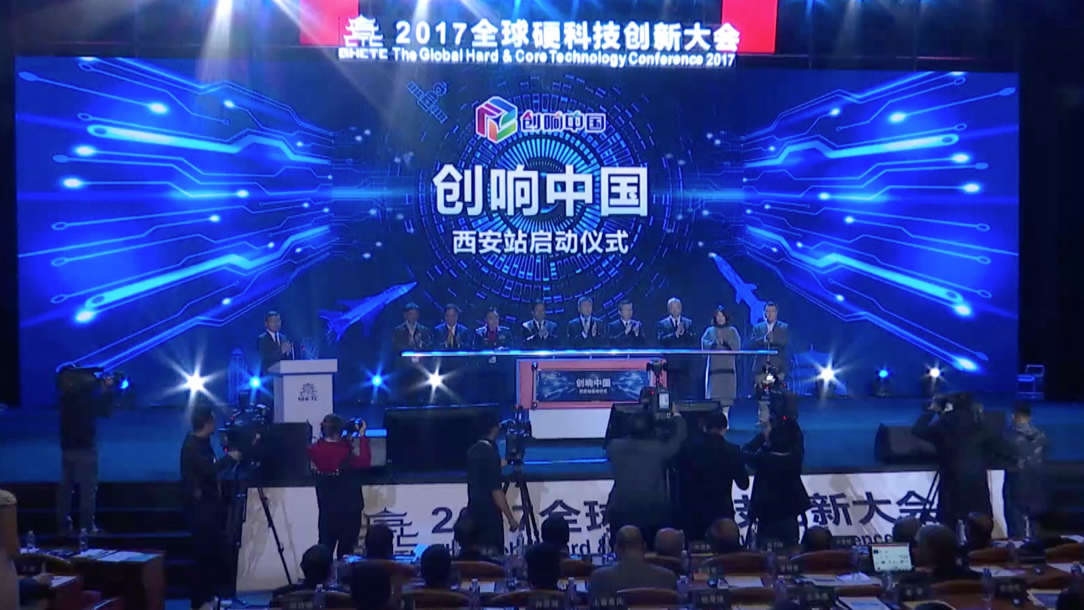
Tech & Sci
20:23, 08-Nov-2017
2017 Global Hard & Core Technology Innovation Conference kicks off
By Liu Yang, Li Yang

Xi’an, the capital city of northwestern China's Shaanxi Province, aims to become a global center for cutting-edge technology by 2025. The 2017 Global Hard & Core Technology Innovation Conference is being held there.
Some of the stunning technologies created by Chinese researchers are being displayed at the conference. More than 800 guests including Nobel laureates, academics and leaders of technology enterprises, as well as well-known investors, are attending the event.
Themed “Hard & Core Technology Changes the World and Hard & Core Technology Promotes Xi’an”, the conference will hold discussions focusing on eight fields: Artificial intelligence (AI), aerospace, bio-technology, photonic chips, information technology, new materials, alternative energy, and intelligent manufacturing.
“We want to create the technology that is able to lead the world's technological trends. We have already finished a large number of experiments on high-end technology in the lab. We need to 'change the lane' in order to surpass other developed countries,” said Doctor Mi Lei, founder of the CASSTAR.

More than 800 guests including Nobel laureates, academicis and leaders of technology enterprises, as well as well-known investors are attending the event. /CGTN Photo
More than 800 guests including Nobel laureates, academicis and leaders of technology enterprises, as well as well-known investors are attending the event. /CGTN Photo
Researchers say the hard & core sciences are fields that are more advanced and influential than they are high-tech. These areas of the natural sciences have extremely high thresholds of entry. They require decades of rigorous research and huge investments from the nation and are nearly impossible to duplicate.
Over 20 enterprises have brought their unique products to the conference.
Josh Lin, the marketing director of Pulse Medical Imaging, says their products are very time-saving, cost-saving diagnostic tools with high accuracy. They have more than 50 sides, and have already got the technology used in the routine surgeries. Such Quantitative Flow Ratio Measurement Systems have undergone nearly 10 years of research. It costs less than 2,000 yuan (about 302 US dollars), which is ten times less than the previous technology. Now it only takes a couple of minutes to decide if the patient needs a heart stent implantation.

The researcher told CGTN reporter the Quantitative Flow Ratio Measurement System has undergone nearly 10 years of research. /CGTN Photo
The researcher told CGTN reporter the Quantitative Flow Ratio Measurement System has undergone nearly 10 years of research. /CGTN Photo
And also a Long-distance Iris Face Integration Recognition System is being displayed on site. It allows for very high precision identification of people by scanning their irises. The researcher says they hope to achieve a multi-scale database of irises of human eyes, and will gradually promote the use of this technology in China.
In 2016, the industrial output in Xi'an reached 118 billion yuan (17.8 billion US dollars), a 10 percent year-on-year increase. Experts say Xi'an will become the world's capital in the hard & core scientific fields which reflect the true technological power of a country.
913km

SITEMAP
Copyright © 2018 CGTN. Beijing ICP prepared NO.16065310-3
Copyright © 2018 CGTN. Beijing ICP prepared NO.16065310-3